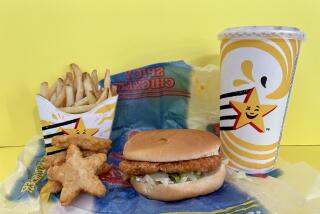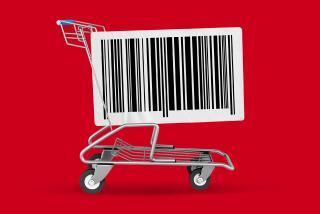A Steak in Every Grill
T-bone and New York steaks under $3 a pound? Put that together with the “Lost in Space” revival and gas under $1 a gallon, and it’s like we’re back in the ‘60s.
This is a great time to be a steak lover, or a fan of any kind of beef at all, for that matter. Thanks to a continuing surplus of meat, prices are lower than they have been in decades.
Prices are so low, in fact, that the federal government stepped in last week and promised to buy up $30 million worth of beef to donate to food banks and charity, trying to shore up the struggling market.
Interestingly, the problem isn’t too many steers. Rather, it’s too much beef. Despite what you might think, the two don’t go hand in hand. Beef production is at near record levels, while the total number of cattle is down almost 25% from the mid-1970s, according to a report by Chuck Lambert, chief economist of the National Cattlemen’s Beef Assn. Some of the reasons: heavier slaughter weights, fewer calves being slaughtered for veal and improved herd management and calf survival rates.
At the same time, beef consumption is far below levels in the 1970s. In 1975, the average American ate about 95 pounds of beef every year. Since 1990, that figure has remained relatively steady, at less than 70 pounds. In fact, since 1985, U.S. beef consumption has trailed production. Some of that has been absorbed by exports, which continue to increase.
Unfortunately, so do imports. In fact, it wasn’t until 1991 that American beef exports actually outweighed imports. That is almost certain to be reversed this year thanks to the Asian financial crisis. About 75% of American beef is exported to Asia.
The bottom line is that the Department of Agriculture predicts that beef production will increase 6 1/2 pounds per person this year while consumption will remain the same.
And that means steak for everyone. Everyone, that is, but the guy who raises the cattle. Squeezed by low beef prices and high feed costs, farmers today take home less than half the wholesale price of beef, down from more than 60% in the ‘70s and ‘80s.
More to Read
Sign up for The Wild
We’ll help you find the best places to hike, bike and run, as well as the perfect silent spots for meditation and yoga.
You may occasionally receive promotional content from the Los Angeles Times.







